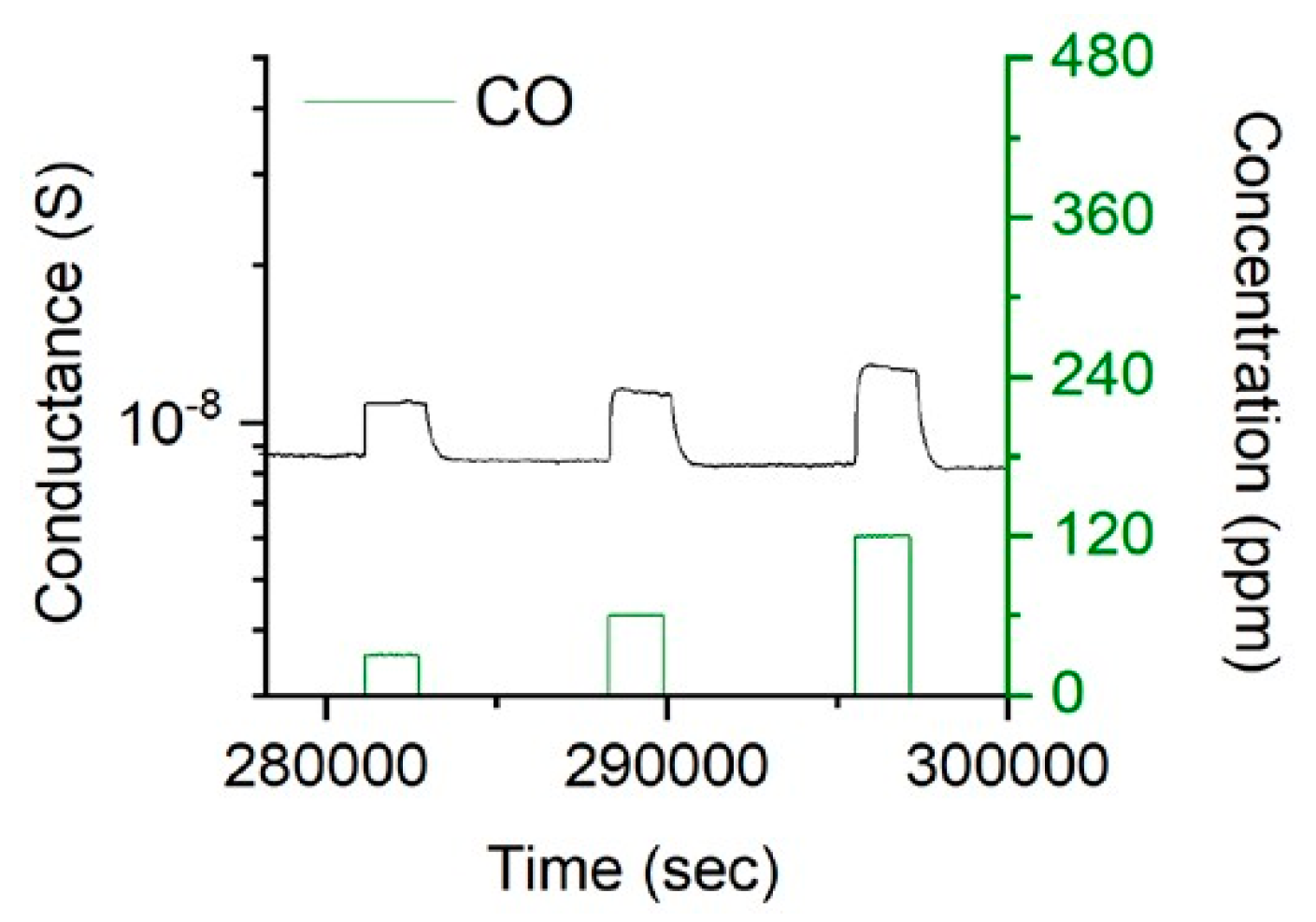Multicomponent Metal Oxide Nanostructures: Fabrication and Study of Core Issues to Improve Gas Sensing Performance †
Abstract
:1. Introduction
2. Materials and Methods
3. Results and Discussion
4. Conclusions
Author Contributions
Conflicts of Interest
References
- Sanidas, E.; Papadopoulos, D.P.; Grassos, H.; Velliou, M.; Tsioufis, K.; Barbetseas, J.; Papademetriou, V. Air pollution and arterial hypertension. A new risk factor is in the air. J. Am. Soc. Hypertens. 2017, 11, 709–715. [Google Scholar] [CrossRef] [PubMed]
- McCullough, S.D.; Dhingra, R.; Fortin, M.C.; Diaz-Sanchez, D. Air pollution and the epigenome: A model relationship for the exploration of toxicoepigenetics. Curr. Opin. Toxicol. 2017, 6, 18–25. [Google Scholar] [CrossRef] [PubMed]
- Gullotta, F.; di Masi, A.; Coletta, M.; Ascenzi, P. CO metabolism, sensing, and signaling. BioFactors 2012, 38, 1–13. [Google Scholar] [CrossRef] [PubMed]
- Malwadkar, S.S.; Gholap, R.S.; Awate, S.V.; Korake, P.V.; Chaskar, M.G.; Gupta, N.M. Physico-chemical, photo-catalytic and O2-adsorption properties of TiO2 nanotubes coated with gold nanoparticles. Photochem. Photobiol. A 2009, 203, 24–31. [Google Scholar] [CrossRef]
- Galstyan, V.; Comini, E.; Ponzoni, A.; Sberveglieri, V.; Sberveglieri, G. ZnO quasi-1D nanostructures: Synthesis, modeling, and properties for applications in conductometric chemical sensors. Chemosensors 2016, 4, 6. [Google Scholar] [CrossRef]
- Galstyan, V.; Comini, E.; Faglia, G.; Sberveglieri, G. TiO2 Nanotubes: Recent advances in synthesis and gas sensing properties. Sensors 2013, 13, 14813–14838. [Google Scholar] [CrossRef] [PubMed]



Publisher’s Note: MDPI stays neutral with regard to jurisdictional claims in published maps and institutional affiliations. |
© 2018 by the authors. Licensee MDPI, Basel, Switzerland. This article is an open access article distributed under the terms and conditions of the Creative Commons Attribution (CC BY) license (https://creativecommons.org/licenses/by/4.0/).
Share and Cite
Galstyan, V.; Ponzoni, A.; Kholmanov, I.; Natile, M.M.; Glisenti, A.; Sberveglieri, G.; Comini, E. Multicomponent Metal Oxide Nanostructures: Fabrication and Study of Core Issues to Improve Gas Sensing Performance. Proceedings 2018, 2, 970. https://doi.org/10.3390/proceedings2130970
Galstyan V, Ponzoni A, Kholmanov I, Natile MM, Glisenti A, Sberveglieri G, Comini E. Multicomponent Metal Oxide Nanostructures: Fabrication and Study of Core Issues to Improve Gas Sensing Performance. Proceedings. 2018; 2(13):970. https://doi.org/10.3390/proceedings2130970
Chicago/Turabian StyleGalstyan, Vardan, Andrea Ponzoni, Iskandar Kholmanov, Marta M. Natile, Antonella Glisenti, Giorgio Sberveglieri, and Elisabetta Comini. 2018. "Multicomponent Metal Oxide Nanostructures: Fabrication and Study of Core Issues to Improve Gas Sensing Performance" Proceedings 2, no. 13: 970. https://doi.org/10.3390/proceedings2130970
APA StyleGalstyan, V., Ponzoni, A., Kholmanov, I., Natile, M. M., Glisenti, A., Sberveglieri, G., & Comini, E. (2018). Multicomponent Metal Oxide Nanostructures: Fabrication and Study of Core Issues to Improve Gas Sensing Performance. Proceedings, 2(13), 970. https://doi.org/10.3390/proceedings2130970









